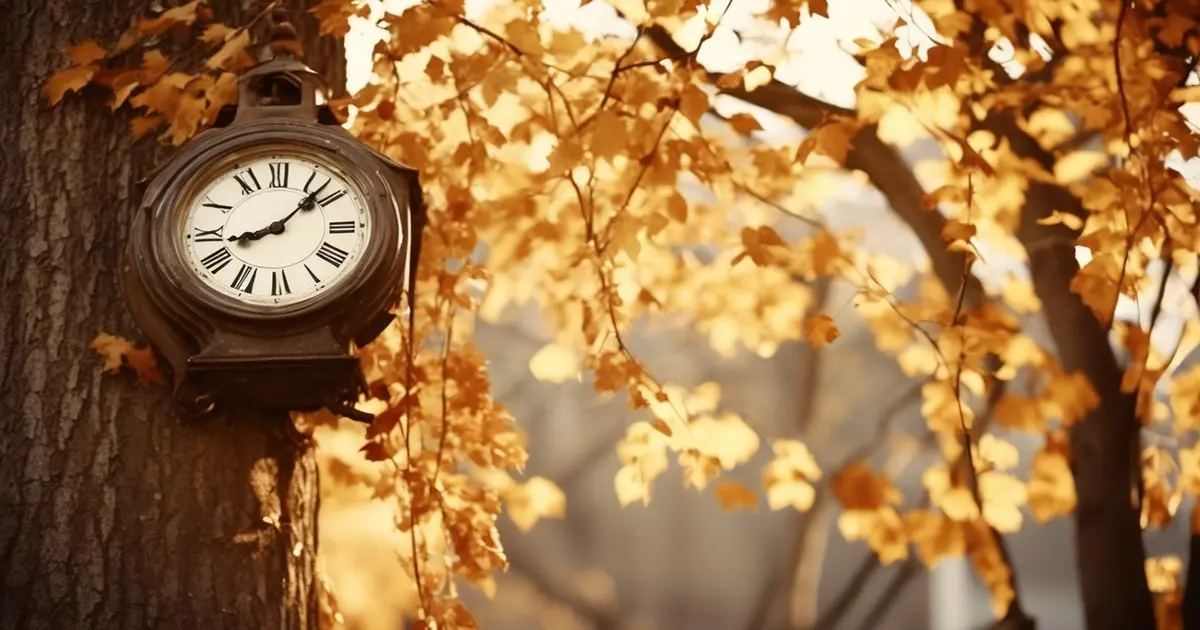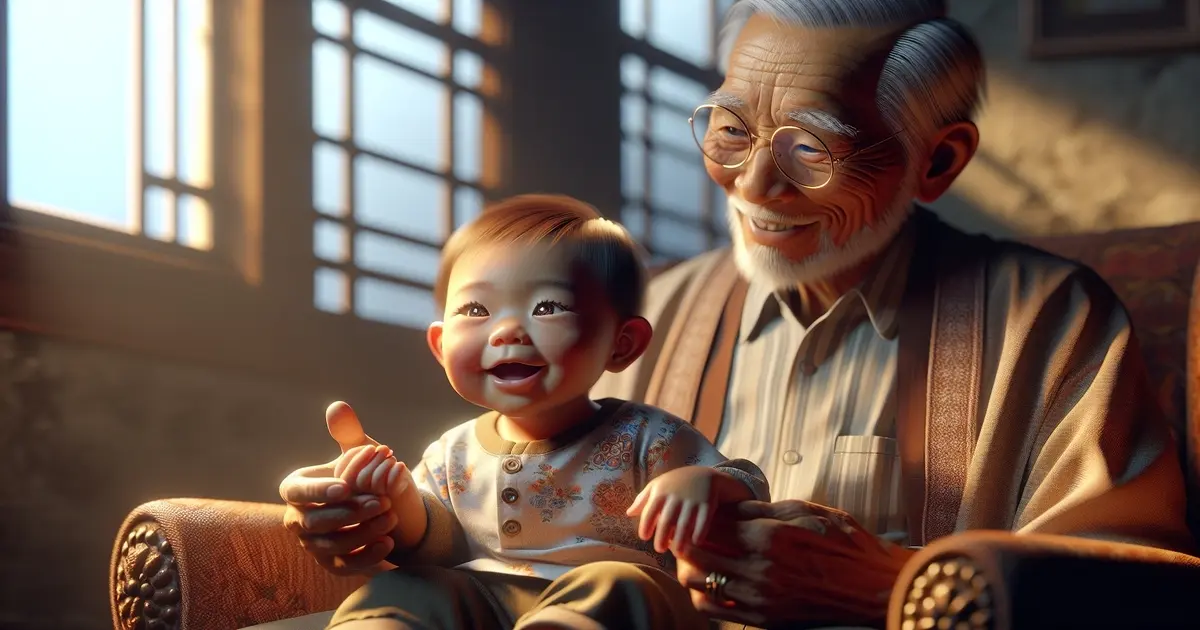Nothing Lasts Forever: Understanding Life's Unfairness
Gain deep insights into the concept of 'nothing lasts forever' and its impact on life. Explore resilience and acceptance beyond clichés.

Nothing lasts forever, and everything, whether it's good or bad, is going to come to an end or evolve. Change molds all of life, from the seasons of nature to friendships that bloom or wither. Most cultures echo the sentiment that people should appreciate the times as they will not remain the same. In fiction, this concept helps characters grow, recover, or come to terms with new eras. We take solace in this reality during hardship, aware that suffering is not permanent. When we're on a roll, it's a reminder to savor the moment. Life moves, and nothing stands for long. Knowing that nothing lasts forever is to recognize the optimism and intelligence of transformation. The second half examines how this concept manifests in everyday living.
" The rhythms of nature, the cosmos, and our own lives teach us that nothing is permanent and that we should embrace change with flexibility. "
Key Takeaways
- Understanding that nothing is permanent may allow us to savor the present and adopt a posture of gratitude for the lucky and beautiful times.
- The rhythms of nature, the cosmos, and our own lives teach us that nothing is permanent and that we should embrace change with flexibility.
- Embracing impermanence can alleviate anxiety, cultivate gratitude, and encourage growth, helping us release and transcend our attachments.
- Art, culture, and spiritual practice from around the world offer potent methodologies for navigating change, loss, and metamorphosis, grounding us in solace and connection.
- Nothing lasts forever, including relationships. They come and go, and once we accept that, we begin to appreciate each connection more and become enriched by every encounter.
- Framing impermanence as a secret blessing compels us to live more genuinely, act more intentionally, and appreciate the adventure of life's constant flux.

Why Nothing Lasts Forever
Everything, from friendships to the stars above, has an end, much like the iconic films featuring Bill Murray or Bruce Willis, which eventually reach their dramatic conclusion. Even if we desperately grasp at it, change lurks in the wings. Recognizing this reality might not be simple, but it allows us to appreciate what we do have at the moment.
1. Cosmic Cycles
Cosmic cycles, much like the ending of a compelling novel, demonstrate that nothing in the universe remains still. Stars are born, burn bright, and die, leaving new clouds of dust and gas in their wake. Just as in films, where characters undergo development, galaxies collide and coalesce, black holes arise and disappear. Scientists refer to this as entropy—a gradual descent into chaos that sculpts everything. These cosmic patterns mirror our own lives: beginnings, endings, and everything in between. The cosmos itself suggests that transience is central to being.
2. Biological Imperative
All that lives, lives, lives, and dies. A tree may remain for centuries, and a butterfly exists for but weeks, yet both are fated to conclude. This goes for people as well. Bodies grow, age, and transform, sometimes in ways that are difficult to accept. Even the connections we have to one another can move or snap. This cycle assists life in continuing. Old leaves drop away in favor of new. Change in nature spurs growth, allowing new species to evolve and flourish.
These realities enable individuals to recognize that all difficult experiences, such as grief or disappointment, are temporary and will pass. Not even success and happiness are permanent. This reality will comfort and soothe.
3. Psychological Shifts
Knowing that nothing lasts forever cultivates a more nuanced way of thinking and feeling. Others get comfort, little concerns or heavy issues seem less heavy when they're temporary. Embracing change cultivates resilience, strength, and equanimity in the face of pressure.
This mentality can result in expansion. When we recognize that emotions and circumstances are temporary, they become fertile ground for curiosity and experimentation. This shift enables them to focus on the present rather than dwelling on the future that is yet to come.
4. Societal Evolution
Cultures, laws, and traditions all change over time. What was once commonplace might vanish. History is replete with tales of one lifestyle giving way to another. Wars cease, peace returns, new leaders ascend, and new ideas flourish.
Society is never still.
Every group, big or small, faces change.
Even the strongest rule will eventually come to an end.
Change shapes for every group.
5. Philosophical Truths
Philosophers from every tradition have explored the concept of impermanence. Buddhism considers it one of the three marks of existence. Hinduism, too, says that all things change. Heraclitus, in Western philosophy, claimed that 'everything flows,' and Samuel Beckett recounted the quest for significance in a changing universe.
The realization that nothing lasts forever causes you to question what matters. It can lead to wiser choices and make sense of life.
The Universe in Flux
The universe is in constant flux, much like the ever-evolving narratives in films. From the tiniest quanta of substance to vast galaxies, all exist in flux. Science, philosophy, and wisdom from all corners of the world converge on this truth: nothing lasts forever, and our lives are shaped by this endless motion —a theme often explored in American science fiction comedy.
Entropy
Entropy is the measure of disorder in the universe. It's why ice breaks down, why metal corrodes, and why old loves fall away. This law applies as much to the physical world as to our lives, always driving toward transformation and, sometimes, toward decay.
In physics, entropy accounts for why a hot drink cools or why a neat room becomes a chaotic mess. In our own lives, our relationships, jobs, and even our memories evolve. The more we struggle to cling to what was, the more we become aware of all that has changed. Philosophers such as Heidegger and Husserl explored how our perception of time is enmeshed with this gentle attraction of chaos. Ultimately, watching entropy in action helps us let go of the illusion that anything is substantial and can assist us in living more authentically.
Evolution
Evolution is an unmistakable indication that nothing endures, not even life. Species emerge and disappear, and characteristics shift as an adaptation to a world in flux. It is a patient process but powerful, sculpting everything from the distribution of a bird's plumage to human behavior and cognition.
Change is necessary for survival. Only those who can adapt to changing times survive in nature. In our own lives, it's similar. We keep shedding skin. It's not only biological flow that I'm talking about—this flow courses through our friendships, our work, and our self-perceptions. Each change teaches us that clinging to the past can stunt us. Evolution, as Heraclitus and the Buddha both observed, is the nature of change.
Erosion
- Rocks erode, and rivers carve, and mountains collapse.
- Minds get weary, hearts shatter, dreams transform, and goals evolve.
Erosion is slow but sure, and it doesn't just sculpt land. Much like character development in films, it also erodes our minds and hearts, preparing the ground for fresh growth. When we lose, it can leave a door open for something new to begin, akin to a novel's ending. The ancient is washed away, yet the new springs from that same ground, much like a detective sequel. Witnessing this, we can accept that loss and change are simply a part of the flux.

Impermanence in Culture
There are countless ways cultures around the world have found to come to terms with the impermanence of life. From philosophies to spiritual beliefs, impermanence goes deep. The table below lists some cultural narratives that help us perceive life's brief spark anew.
| Culture/Concept | Key Idea | Example/Expression |
|---|---|---|
| Japanese (Mono no aware) | Gentle sadness for passing beauty | Cherry blossoms falling, haiku poetry |
| Buddhism | All things are transient (anicca) | Meditation on change, Buddha's last words |
| Hinduism | Material world is impermanent (anitya) | Katha Upanishad, ritual detachment |
| Greek Philosophy | Everything flows, nothing stays the same | Heraclitus’ river metaphor |
| Western Literature | Embracing loss in stories and poems | Novella “Impermanence” by Frisano |
These narratives not only shape our perception of transformation but also help us imbue meaning in the present. They remind us that by embracing change, we could become more intimate with the world and one another.
Artistic Expression
Artists, on the other hand, tend to put impermanence at the center of their craft. They employ ephemeral beauty—such as fragile flowers, transient sand paintings, or performance art—to remind us how quickly life turns and slips away. Ice sculptures, theatre shows – they're all just there for a moment. This captivates us, causing us to appreciate every moment and observe the emotions it evokes.
In fiction, authors utilize narrative to evoke impermanence, transformation, and optimism. The novella Impermanence and Buddhist paintings are two such examples. Through these works, art helps us see how those short, bright moments form who we are. It forces us to consider what truly counts while it counts.
Spiritual Beliefs
- Many religions teach that nothing stays the same.
- Buddhism refers to this impermanence as anicca, encouraging adherents to release and accept the world's flux.
- Hinduism employs the term anitya to caution us that clinging causes suffering.
- Rituals—funerals, seasonal festivals, prayer—often mark life's passing stages.
- Spirituality offers solace, allowing individuals to feel at ease by embracing impermanence as a natural and positive aspect of life.
Modern Narratives
Movies, books, and media are now often about impermanence. Characters suffer when things come to an end — a job, a home, a cherished person — and this suffering resonates with us because we've been there. These stories help individuals process their transitions. They demonstrate that just because things wilt, there is hope to bloom again.
Storytelling reminds us that life's most sweet and challenging moments are simply phases of the same cycle. Contemporary tales offer us valuable insights into strategies for survival, courage, and perseverance.
The Ebb and Flow of Relationships
Like everything, our relationships evolve, much like the character development seen in films. They come in waves, formed by both happiness and hardship, akin to the plot twists in a drama film. This shift lies in life's larger rhythm. Old concepts such as saṃsāra in Buddhism, Jainism, and Hinduism teach us that nothing is permanent. Saṃsāra is translated as "running around in circles." It's the concept of incarnation, liberation, and reincarnation associated with karma. Human beings attempt to escape this cycle through concepts such as Moksha or Nirvana. In art, the 16th- and 17th-century vanitas style employs still-life imagery to illustrate the brevity of life and the temporary nature of pleasure. These concepts serve to remind us that nothing, not even our most intimate connections, remains static.
Viewing relationships as transient allows us to appreciate them more, just as a likable hero in a novel learns to value fleeting moments. Our connection with partners, friends, or family can sometimes seem powerful and constant, like an undying river. Even the broadest rivers have their ebb and flow. Relationships have "flows," times when things are great, and "ebbs," when distance or struggle creeps in. During an ebb, you can feel alone, even when your beloved is close. Suspicion can fester. It's easy to begin to believe that hard times never end. Sentiments such as "nothing is going my way" or "this will last forever" pop in. These feelings are shaped by the 3 P's: personalization (blaming yourself), pervasiveness (feeling like everything is wrong), and permanence (believing things will never change).
During rough patches, it's intelligent to avoid making significant decisions. Hard feelings can obscure what's true. If you have an anchor in your life—a rock, a buddy, a partner—they can help you weather the ebb. Over time, an ebb and flow is typical, with hope and intimacy returning. These processes of ebb and flow can reveal even more about ourselves. They prod us to discover patience, care, and resilience. Once we realize that all relationships evolve, we become better at cherishing the sweet times and learning from the tough ones, much like the character development in a well-written sequel.

Navigating Transient Life
Life is cyclical, akin to the ebb and flow of seasons or the rise and fall of dynasties. Old tales, such as The Tale of the Heike, recounting the impermanence of the Taira and Minamoto clans' glory, serve to remind us that nothing is permanent. Throughout history and across cultures, we've sought strategies to deal with this reality, much like a detective unraveling a mystery in a drama film. Embracing the concept of "becoming," borrowed from philosophy, can make us more comfortable with life's impermanence.
Acknowledge Pain
Pain resides at the center of transience. Losing someone dear or witnessing a chapter close can leave a hurt that won't go away. It's natural to want to shove pain aside, but recovery begins when we meet it directly. Revealing our hearts, even in the most unspeakable ways, can forge authentic connections with those around us. When we open up, we discover that others shoulder similar loads and that we're not alone.
We grow by meeting pain, not by dodging it. The Tale of the Heike is steeped in loss and transformation, but it's the candid confrontation with suffering that transforms the individuals. Encountering pain fortifies us, enabling us to weather subsequent tempests.
Practice Gratitude
Gratitude is the tiny flame that holds its flickering, faithful point-blank against the storm of unpredictable days. Observing a peach tree blossom and then fall serves as a gentle reminder that beauty is fleeting, yet it is not to be taken for granted. Much like the character development in a poignant novel or film that leaves a lasting impact, gratitude allows us to appreciate the transient moments that shape us.
Gratitude can change our perspective on loss, much like a well-crafted story or drama film can alter our views. Instead of only grieving over what's past, we come to hold in our hearts what once was. This modest change can turn our everyday life more prosperous and more connected, intensifying our ties to people and locations, much like the emotional connections formed with beloved characters in cinema.
Embrace Growth
- View change as an opportunity to learn, not just something to survive. Every setback or shift can present opportunities to develop new skills or make new friends.
- Remain curious when things shift. Query what you can take or what instruction lurks behind the sacrifice.
- Let growth provide you with meaning. More often than not, the toughest tests reveal to us what's most important.
Change can seem complicated initially, yet it frequently points us toward the best of times, much like character development in a novel. As the Genpei War in The Tale of the Heike unfolded, it generated new periods and concepts, much like a sequel can expand a story. Growth comes from greeting change with open arms, just as audiences embrace films that challenge conventional storytelling.
Practical Strategies
- Journal to capture feelings and lessons as you experience them during difficult times.
- Be mindful, even if only for a few minutes a day.
- Reach out to others, share stories, and listen.
- Try to let go of what you can't change.
The Hidden Gift of Impermanence
Impermanence is all around us–in the natural world, in our material possessions, in each relationship and life phase. It may initially seem disturbing, but viewing the world as perpetually in flux can provide a genuine sense of comfort and perhaps even a sense of grace. In Buddhism, this is one of the main ideas: everything changes, nothing lasts forever. That's a thought that helps many of us make it through hard times, knowing that whatever hurt or strain we're feeling at the moment, it too shall pass. Even good things pass, which can drive us to savor them more while they endure.
This idea has resonated across cultures. At its heart, the Japanese aesthetic of wabi-sabi centers on appreciating the beauty of impermanence and imperfection. It's not merely a style; it's a worldview—manifesting in the raked gravel and dispersed stones of the Ryōan-ji Zen garden or the secluded tea house of Kenroku-en Garden. Wabi-sabi concerns noticing the value in sun-bleached wood, cracked mugs, and the quiet flow of time. Others may confuse the name with wasabi. However, wabi-sabi has nothing to do with spicy food. Its roots are in two words: "wabi," which hints at quiet simplicity, and "sabi," which means the beauty that comes with age and use.
There's another place this shows up: the Ise Shrine in Japan. Every 20 years, they construct it all over again. It's an enormous undertaking, but it preserves the artsmanship and educates all that, yes, even holy sites are not eternal. Embracing this reality—often referred to as impermanence—can soften the sting of transition or grief. Philosopher Thich Nhat Hanh viewed impermanence as a type of liberation. If nothing is permanent, there's plenty of space for expansion and fresh beginnings. Ram Dass, the spiritual teacher, likened death to 'removing a tight shoe.' Even death can signify solace, liberation, and tranquility.
To live with impermanence is to be present. We learn to thank the simple things, not just the big stuff. Sometimes, it is hard to let go when we lose someone or something we love. Recalling that all things pass may help us live more truthfully, more fully, and with greater passion.

Conclusion
Life goes on. Change lurks in every shadow—ancient trees drop boughs, rivers dig new courses, friends grow apart, and tales close. Nothing lasts. We witness things changing daily. Some people consider this mournful. Some observe a clean slate. Many cultures pay tribute to this cadence. In a bazaar, a beloved stand folds, but another springs up. A buddy goes, but a fresh grimace soon giggles at your side. To live with these shifts, people tend to cling to the little pleasures and find ways to release. Suck it up, but own it. There's no pause button on life, so savor the present—every moment is an opportunity to expand or rediscover joy. Have a transformational tale? Please give it to someone. Let's keep the discussion alive.







